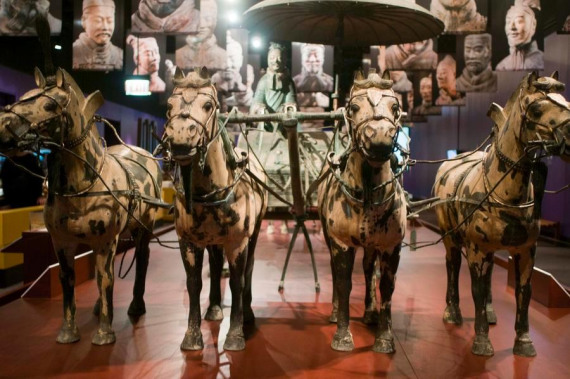
photo taken on March 1 shows the terracotta horses from China on display at the Field Museum in Chicago. (Photo/Xinhua)
Experts said there is evidence from the sculptural style of the Terracotta Warriors, as China didn't have a tradition of building life-sized human statues before the Qinshihuang tomb was created.
Liu said, "We now believe that the Terracotta Army, the acrobat figurines and the bronze sculptures found on site were inspired by ancient Greek sculptures and art." In fact, as early as 2013, some British scholars proposed this idea.
Professor Lukas Nickel from the University of Vienna points out that the acrobat figurines recently found at the Qinshihuang tomb also support this theory.
He believes that the Greek sculptures introduced from Central Asia to the Qin Dynasty influenced Emperor Qinshihuang, and said, "I imagine ancient Greek sculptors may have been at the site to train the locals."
In addition, archaeologists found that the Qinshihuang tomb complex is much bigger than first thought thanks to new technology in detection, and may be around 98 square kilometers.
They also discovered the remains of a young woman, who may be one of the concubines of Qinshihuang. A young man's skull with a crossbow bolt embedded in it was also discovered, which is believed to belong to the Emperor Qinshihuang's eldest son.
The documentary will be aired in the UK and US on Sunday.


















































